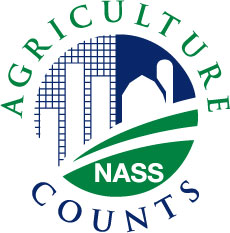Agricultural Surveys Program
Agricultural Surveys Program
0213-Ag Surveys-Ag Yield-Info
Agricultural Surveys Program
OMB: 0535-0213
|
Agricultural Yield Survey |
|
United States Department of Agriculture |
National
Agricultural Statistics Service |
|
|
April 2007 |
|
The Agricultural Yield Survey is the primary tool used by USDA’s National Agricultural Statistics Service (NASS) to measure crop production throughout the growing season. Data are collected each month from producers of:
Small grains (May-Aug.) – winter wheat, durum wheat, other spring wheat, barley, oats
Tobacco (May-Nov.) – burley, air cured, dark fired
Hay (Aug.-Oct.) – alfalfa, other hay
Row crops (Aug.-Nov.) – corn, cotton, dry edible beans, peanuts, rice, soybeans, sorghum, sugarcane
HOW ARE THE DATA COLLECTED?
The Agricultural Yield Survey is conducted in all states except Alaska and Hawaii. Data are gathered from a selected sample of producers who grow at least one of the crops of interest. The first month, respondents provide information on acres planted, acreage for harvest and expected yield per acre. In the following months, the same operators update their expected yield per acre, enabling NASS to track any production changes that might result from changing growing conditions.
Data collection methods include:
Telephone – Computer-assisted telephone interviewing (or CATI) is the primary method.
Mail – Participants fill out and mail back the questionnaire that was mailed to them.
Internet – A new, secure electronic data reporting (EDR) option is the timeliest, most cost-effective method.
Personal interviews – An interview with a NASS representative can be requested by the respondent.
HOW IS THE INFORMATION USED?
Data from the Agricultural Yield Survey is a critical component of NASS’s Crop Production report, which provides a monthly measure of the current state of U.S. agricultural production. The survey enables NASS to track and report any changes that might occur due to weather, pests, disease and other factors.
All sectors of the U.S. agricultural industry – producers, buyers, suppliers, policymakers and others – rely on crop production estimates to make sound business decisions. For example:
The information can help producers develop marketing plans for their operations, determining what to produce and how and when to sell it.
The information enables the industry to forecast transportation and storage requirements and evaluate export potential.
USDA agencies and State Departments of Agriculture use the information to determine crop insurance and disaster aid payments along with other program benefits.
Farm organizations use the information to help form their policy positions.
The information provided by survey respondents is confidential by law. NASS safeguards the confidentiality of all responses and publishes only state- and national-level data, ensuring that no individual operation or producer can be identified.
All reports are available through the NASS web site: www.nass.usda.gov. For more information on NASS surveys and reports, call the NASS Agricultural Statistics Hotline at (800) 727-9540.
| File Type | application/msword |
| Author | NortDe |
| Last Modified By | USDA |
| File Modified | 2007-03-13 |
| File Created | 2007-01-26 |
© 2025 OMB.report | Privacy Policy

